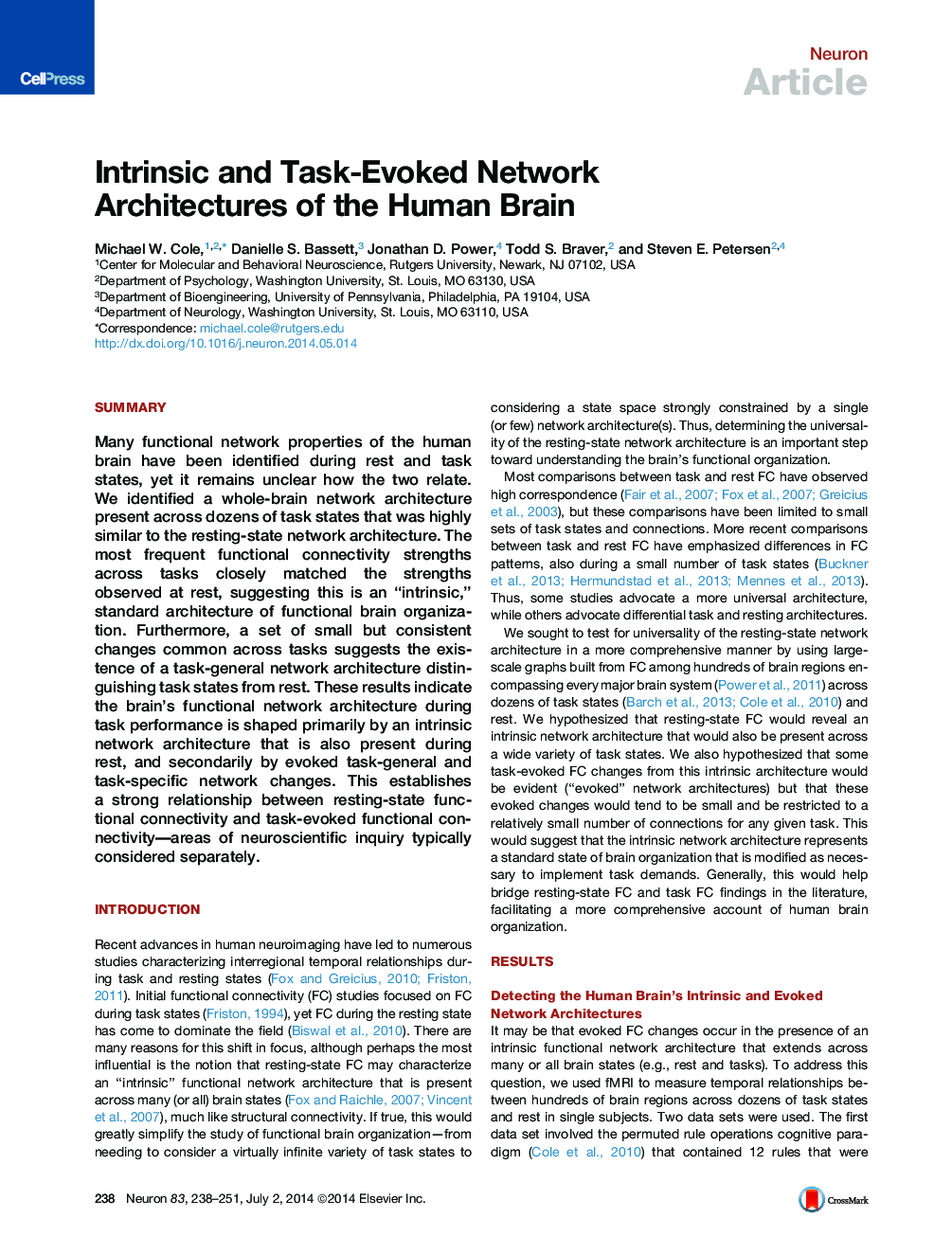| Article ID | Journal | Published Year | Pages | File Type |
|---|---|---|---|---|
| 4321119 | Neuron | 2014 | 14 Pages |
•There is an “intrinsic” functional network architecture present across many tasks•The intrinsic architecture is highly similar to the resting-state architecture•Tasks modify the intrinsic architecture to produce “evoked” network architectures•Task-evoked changes common across tasks form a task-general network architecture
SummaryMany functional network properties of the human brain have been identified during rest and task states, yet it remains unclear how the two relate. We identified a whole-brain network architecture present across dozens of task states that was highly similar to the resting-state network architecture. The most frequent functional connectivity strengths across tasks closely matched the strengths observed at rest, suggesting this is an “intrinsic,” standard architecture of functional brain organization. Furthermore, a set of small but consistent changes common across tasks suggests the existence of a task-general network architecture distinguishing task states from rest. These results indicate the brain’s functional network architecture during task performance is shaped primarily by an intrinsic network architecture that is also present during rest, and secondarily by evoked task-general and task-specific network changes. This establishes a strong relationship between resting-state functional connectivity and task-evoked functional connectivity—areas of neuroscientific inquiry typically considered separately.
